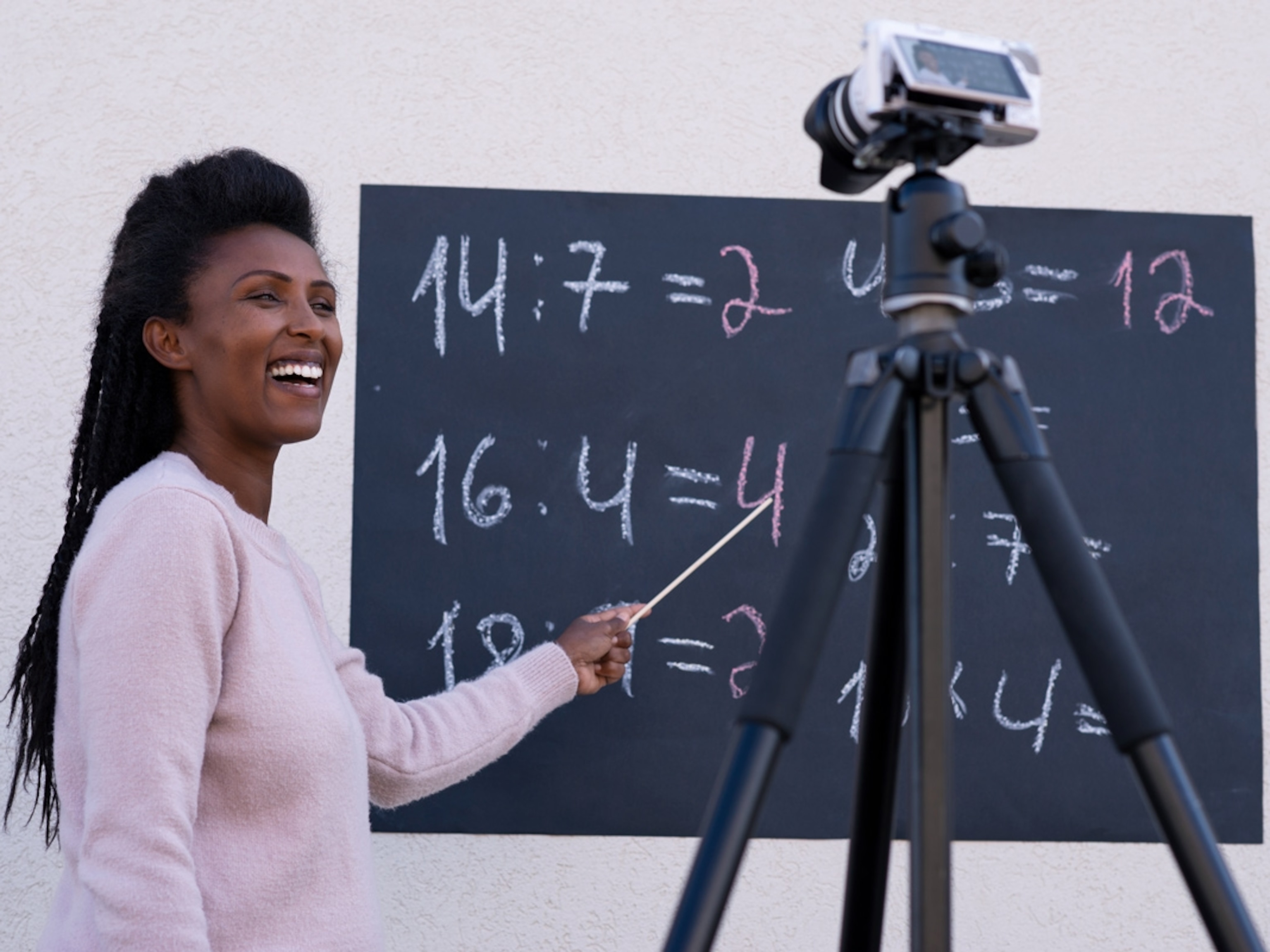
How educators are overcoming virtual learning challenges
These creative solutions from teachers can inspire parents with at-home learners
When K-6 special ed teacher Leanne Wu had to take her class remote, she knew she was going to face challenges getting her students—all of whom have developmental delays or sensory challenges—to fully benefit from the lessons she was presenting.
So the educator from the West Contra Costa Unified School District near San Francisco came up with an innovative solution: She had her students produce and star in a Zoom play that reimagined the Humpty Dumpty nursery rhyme.
Wu’s students told how the notorious egg—stuck in his castle during quarantine—climbed the walls out of boredom and frustration. Triumphantly reaching the top, he lost his balance. (You know the rest of the story.)
The project, she says, was a powerful motivator to get her students online and engage more with their lessons. And because the production—attended virtually by family and friends—allowed them to connect and collaborate with their friends, Wu says her students seemed to more readily grab onto abstract concepts like character analysis and story arc.
“It really made everyone stretch, and think and do things differently,” Wu says. “I’ve been teaching 16 years and [this] was the coolest thing I’ve ever done.”
Virtual learning continues to present plenty of obstacles. But teachers and parents are, at heart, problem-solvers. Educators have been finding creative ways to overcome the challenges of being disconnected from traditional school classrooms—strategies caregivers can use at home to support virtual learners.
Challenge 1: Kids are losing focus in virtual classrooms
Though live-streamed video classes—also known as synchronous learning—dominate as instructional substitutes, Zoom fatigue is just as real for kids as it is for professionals stuck in endless online meetings. In response, many teachers have tried to shake things up by taking the camera outside to record lessons.
Third-grade teacher Ellen Daly says she looks for opportunities to match the setting with whatever she’s reading aloud to the class that week. The Copperas Cove, Texas, educator takes books outside and films her read-alouds in different settings, or uses homemade special effects screens (green construction paper taped up behind her) to add relevant scenery to enhance the story.
And when real field trips were no longer an option, Zane Hurley, a sixth-grade science teacher in Palm Beach County, Florida, found that remote teaching opened up new opportunities to share cool stuff with his students. In the spring he filmed videos at area geologic field sites, such as a sedimentary rock formation on nearby Hutchinson Island. The “virtual” field trip helped students engage more than just watching Hurley talk onscreen.
What parents can learn: Invite your kids to take up the camera themselves to help maintain their focus. For instance, Wu’s son started keeping a video journal to record his thoughts on school and lessons. If schools allow it, parents and kids can play around with creative virtual backgrounds, too, to help them feel a sense of ownership in their digital surroundings. (Here’s another article on helping your kids maintain their focus.)
Challenge 2: Overcoming the impersonal nature of technology
Since the Bellingham Public School District in Washington State went remote in March, Tyler Dockins has stayed busy troubleshooting tech issues with teachers and families. But even when the grown-ups got more comfortable with setting up Zoom classrooms and downloading lessons, a challenge remained: building and maintaining strong parent-teacher relationships in the absence of physical meet-ups.
“A lot of our teachers are using technology in ways to humanize an aspect of education that feels very distant and disconnected this year,” Dockins says.
The district encouraged teachers to use scheduling tools like Calendly to make it easier for teachers and families to sync up, and reached out to parents to encourage them to take advantage of virtual conferencing. And once parents embraced it, educators heard something surprising: It created new opportunities for schools to meet parents and caregivers where they are.
Attending parent-teacher conferences in person was sometimes tricky for working parents, but video conferencing has made it possible for caretakers to call in for weekly check-ins while on breaks from their jobs at local factories and plants, Dockins says.
“We have heard families tell us: This is not terrible,” says Dana Smith, communications manager for the Bellingham school district. “The level of family engagement is not something we’d ever be able to facilitate easily in a typical school year.”
What parents can learn: Take advantage of one-on-one video chats for tutoring or social time, if your school or district has that option—or ask for it if your school currently doesn’t. Even just casually chatting with the teacher helps build connections that a physical classroom setting would provide. And that new digital relationship can apply to students as well: Daly says she keeps regular “office hours” with her camera on for kids to drop in and chat. (Here’s more advice from educators on building a better relationship.)
Parents can also embrace technology for their kids’ peer relationships as well. For instance, Wu said that her own son developed a study buddy—in Canada—after they worked together on a stop-motion animation class project on Outschool, a website offering live virtual courses in everything from architectural history in Minecraft to ukulele boot camp.
Challenge 3: Digital learning often feels like a one-way street
One of the toughest challenges facing teachers right now is how to get kids to absorb their lessons as well as demonstrate their understanding as they work through problems and concepts. In the classroom, this happens organically as teachers monitor work in progress or break kids out into small work groups. But even with video conferencing, teachers’ ability to tailor instruction to individual student needs is extremely difficult.
That’s why educators have sought out digital tools that emphasize two-way communication and collaboration between them and their students. For instance, Daly says she leans heavily on Nearpod, an interactive slideshow tool that allows students to contribute to classwork, answer polls, and fill in scanned worksheets. Padlet is another popular app among teachers; students can contribute virtual “sticky notes” for discussions and projects to this collaborative bulletin board. Many teachers stay “old school,” using a Google Doc to create a choice board of digital options with videos, worksheets, games, reading and writing prompts, and art projects that align with the lesson.
What parents can learn: Although those solutions are more appropriate for educators, parents can seek out their own collection of apps that help kids communicate and collaborate with peers while the virtual learning experience drags on. Examples include Prodigy, a collaborative questing game that bills itself as “math homework disguised as a video game;” or Youth Voices, an online platform for middle to high school students around the world to share written work and podcasts with peers.
“They can offer kids unique experiences they can’t have offscreen, reinforce skills, and get at concepts from different directions,” says Christine Elgersma, senior editor of learning resources at Common Sense Media, which curates digital collections for children along with reviews.
The number of apps to choose from can be overwhelming, but Dockins advises parents to ask a critical guiding question: What do you want your child to be doing by the end of the school year or virtual learning? For instance, do you want them to have more empathy? Be a whiz at multiplication facts? Have more connections to the world? Identifying those goals will help the right app emerge.




